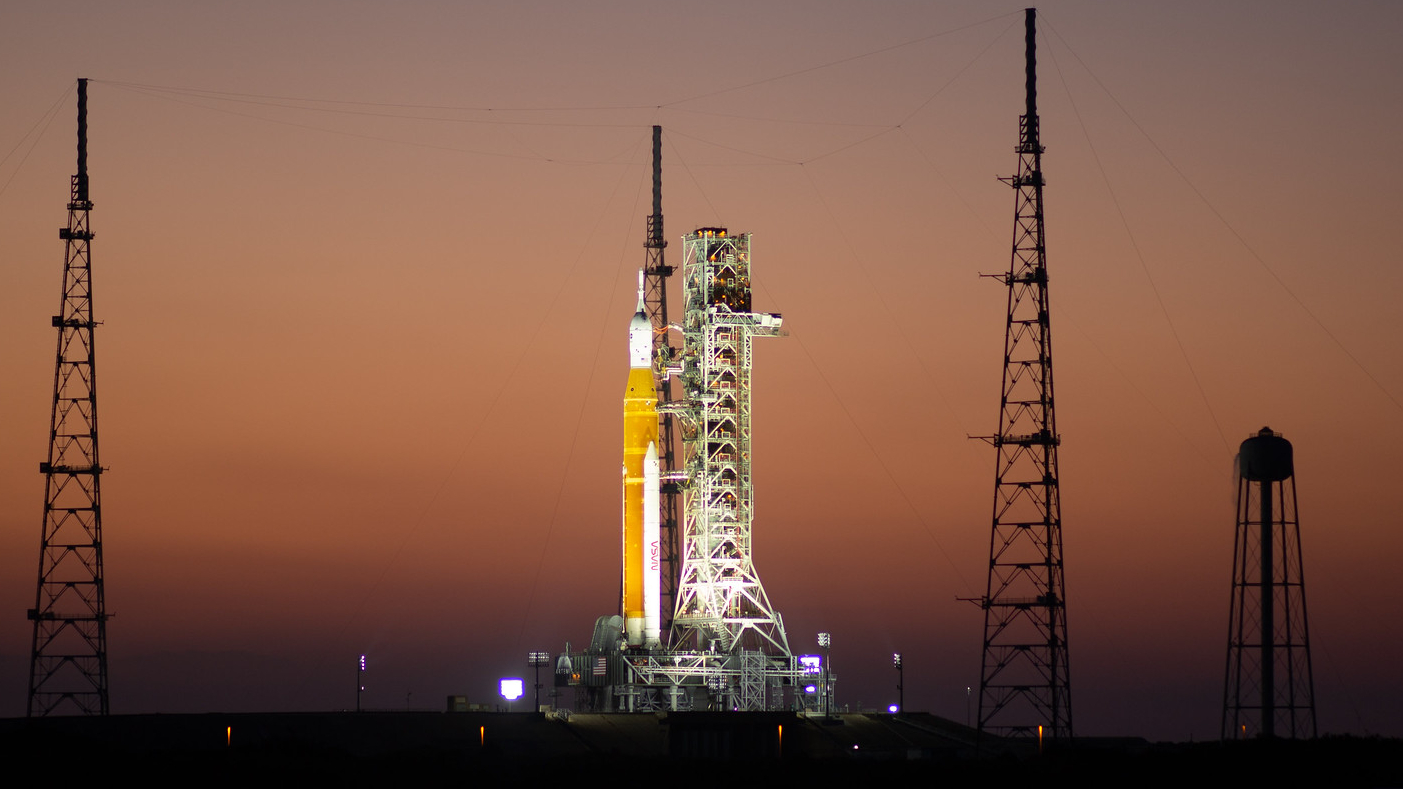NASA aiming for big 2023 thanks to generous budget request
Artemis and satellites and X-planes, oh my.

The White House's generosity has NASA poised to do big things in 2023 and beyond, according to the space agency's deputy chief.
"The $26 billion fiscal year 2023 budget request is 8% more than enacted federal spending levels for fiscal year 2022, affirming the importance of civil space to the Biden-Harris administration and to the strategic future of the United States," NASA Deputy Administrator Pam Melroy said last week at the 37th Space Symposium in Colorado Springs.
"It represents the largest overall request in current dollars for NASA and the largest request for science funding in agency history," she added.
Related: 13 presidential visions for space exploration: From Ike to Biden
Melroy emphasized the budget's potential positive impact on NASA's Artemis program, the agency's plan to return astronauts to the moon as a stepping stone to Mars. (Reminder: The budget request remains just that at the moment, a request; it still must be approved by Congress.)
She called the recent rollout of the Artemis 1 moon mission to its launch pad at Kennedy Space Center in Florida "very emotional and very historic." She also acknowledged the expansion of lunar science programs to prepare for further human exploration of the moon, including the VIPER rover that will map the location of water ice near the moon's south pole.
"We never forget we are standing on the shoulders of giants, the men who landed on the moon and the women who did the math," Melroy quipped, stressing that the accomplishments of the Apollo generation inspired her own foray into the space program. (Melroy, a retired Air Force colonel, served as a NASA astronaut and was one of two female space shuttle commanders.)
Get the Space.com Newsletter
Breaking space news, the latest updates on rocket launches, skywatching events and more!
Melroy then looked ahead to space science missions, including the upcoming Nancy Grace Roman Space Telescope, due to launch before the end of the decade, as well as the Mars sample return mission campaign that will bring back to Earth material collected by the Perseverance rover. The 2023 budget will also contribute to the extension of the International Space Station's operations through 2030, as previously committed by the Biden administration.
Melroy also reiterated NASA's commitment to Earth science, particularly regarding climate change; this year will see the initiation of the agency's Earth System Observatory constellation of satellites.
"We will continue to integrate our climate efforts across the agency for maximum synergy, and we will initiate the Earth Information Center, an effort to bring together our space-based climate data, along with data from our interagency and international partners into one place," she said.
"This will help make it more accessible to scientists, yes, but we really intend to make it more accessible to decision-makers, and also all citizens, especially in our communities that are most affected by climate change," Melroy added.
Along those lines, Melroy announced NASA's prioritization of aeronautical innovation in green aerospace. For example, the agency's X-57 all-electric aircraft is scheduled to begin flight tests this year, with further X-planes planned.
"The 2023 budget enables us to begin planning for the next X-plane through the Sustainable Flight National Partnership, which will demonstrate flight efficiency capabilities that can transition directly to narrowbody civil aviation," Melroy said. "We also continue enthusiastically in the X-plane business with the X-59 later this year, which will demonstrate how we can mitigate sonic booms and, we hope, lead to persistent supersonic commercial flight."
Finally, Melroy praised NASA's commercial partners, from commercial crew to commercial cargo to commercial science. The Biden administration's budget request includes $220 million for commercial destinations in low Earth orbit, with which NASA hopes to promote a new space economy.
"I believe history will look back and say that we are in the golden age of commercial space, and it's pretty exciting to be living in it," she said.
You can watch a recording of Melroy's April 5 remarks on NASA's YouTube channel.
Follow Stefanie Waldek on Twitter @StefanieWaldek. Follow us on Twitter @Spacedotcom and on Facebook.
Join our Space Forums to keep talking space on the latest missions, night sky and more! And if you have a news tip, correction or comment, let us know at: community@space.com.

Space.com contributing writer Stefanie Waldek is a self-taught space nerd and aviation geek who is passionate about all things spaceflight and astronomy. With a background in travel and design journalism, as well as a Bachelor of Arts degree from New York University, she specializes in the budding space tourism industry and Earth-based astrotourism. In her free time, you can find her watching rocket launches or looking up at the stars, wondering what is out there. Learn more about her work at www.stefaniewaldek.com.









